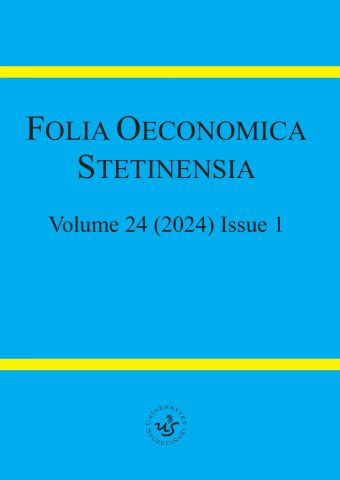Exploring Asymmetric GARCH Models for Predicting Indian
Base Metal Price Volatility
Exploring Asymmetric GARCH Models for Predicting Indian
Base Metal Price Volatility
Author(s): Arya Kumar, Jyotirmayee Sahoo, Jyotsnarani Sahoo, Subhashree Nanda, Devi DebyaniSubject(s): Economy, Business Economy / Management, Financial Markets, Socio-Economic Research
Published by: Wydawnictwo Naukowe Uniwersytetu Szczecińskiego
Keywords: Volatility; asymmetric GARCH; Base Metal; forecasting; Sustainability
Summary/Abstract: Research background: Many studies have been done in the field of predicting the Volatility of Commodities; however, very little or no analysis has been conducted on any sector, industry, or indices to identify which model is best to understand the asset’s characteristics, as there is a hypothesis that all financial time series can be interpreted by implementing the same model. Purpose: The primary objective is to identify different tools developed by the researchers in estimating impulsive clustering and leverage effects. A comparison will be made among the available tools of the GARCH family models to suggest the best tool to forecast and calculate volatility with the least error. Research methodology: The data used are historical time series data of Indian base metal indices, i.e., Aluminum (AL), Copper (CO), Lead (LE), Nickel (NI), and Zinc (ZI) from NSE for a period from 1st June 2012 to 31st August 2022 from the official website of NSE of India. The study compared and attempted to identify which GARCH family model is suitable to measure the volatility clustering and leverage effect in Indian base metal indices by reducing the chances of error. Results: The study has revealed that the GRACH asymmetric models, while approximating and predicting the financial time series, can enhance the model’s output when it has a high frequency. Here, the asymmetric GARCH models (TARCH, CGARCH, EGARCH, and PARCH) better predict volatility than classic models. Novelty: This study is original in its approach, as a previous study stated the presence of volatility or leverage effect by implementing any one tool. However, this study will compare available tools to suggest which is appropriate for which sector. This analysis will support future researchers and practitioners in evaluating volatility clustering and the effect of leverage by implementing the appropriate GARCH family model without believing in a hypothesis that a single model is good enough to predict volatility.
Journal: Folia Oeconomica Stetinensia
- Issue Year: 24/2024
- Issue No: 1
- Page Range: 105-123
- Page Count: 19
- Language: English

